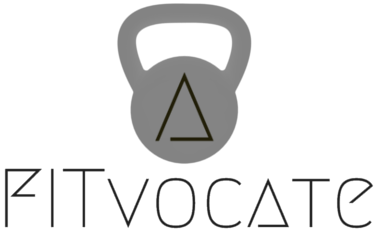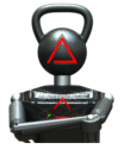
So you’ve decided that it was time to improve your vertical jump. How smart of you not to simply buy new sneakers. So, if you just stumbled on this site and are one of those convinced it is your shoes and not you; welcome! You’ll soon find out it’s you, sorry mate. Now of course that’s assuming you’re wearing the right size shoe...and type. Either way, again, kudos! Only the true athlete knows that you’re not born with great athletic abilities, they’re trained.
Oh where to begin. It almost feels as if we should be whispering this, writing in code, or in some dark alley somewhere. Just imagine if Earth caught wind of your intentions. “Why you leave, you no like me?” She’ll say. Yeah, Earth’s a girl...with poor grammar. What? You don’t have the intention of going into orbit? Oh, never mind. Alright we’ll try and keep this mortal then.
Get On Your Nerves
So, before we jump into the muscles let’s go a little deeper and get to know ourselves a little better. What makes your muscles perform actions? Don’t you say outside stimuli, I will reach right through this computer. Tell us, exactly how does a tree respond to being punched? Didn’t think so, smart guy. Sorry about that (Clears throat). Outside stimuli is merely the initiator, as living beings we then begin a response tactic. We do this with the use of our nervous system. So that’s where we will begin our journey to mutant like jumping abilities. Your nervous system has the potential of being exercised and improved just like muscles. Believe it or not, you work your nervous system every day. When you start an exercise involving a new movement, it improves exponentially. Regarding muscle function the nervous system is responsible for allowing us to adapt to new conditions. But you may be asking yourself, “How do you work out your nervous system?” No, upfront there isn’t any machine at the gym that targets the nervous system. The best way to improve your nervous system for a specific action is to attempt that specific action. So, we’ll start here.
Focus On Your Goal
Box jumps, lots and lots of box jumps. A box jump is so much better than jumping up and down on flat ground. First of all you don’t get any real understanding of how high you can jump on flat ground. More importantly, your nervous system responds differently when you perform box jumps compared to flat ground jumping. When you stare at your objective height, as in a box jump, your brain sends signals to your muscles for the amount of effort required to achieve that height. So naturally overtime, in a gradual process, your nervous system will sharpen and your vertical jump will have no choice but to increase. But, this could take many weeks if not months. Nobody has time for that, so with our analysis of the jump we will show you what muscles to focus on when it comes time to start training your jump!
Quick Physics Lesson
Now we can begin the fun stuff! You now know how important a finely tuned nervous system is, so we’ll now discuss the more exciting aspect, muscles. Let’s understand the muscles being recruited! Jumping is merely a translation of energy, we like to refer to it as a transition of momentum because remember momentum is mass * velocity, and kinetic energy is (½)*mass*(velocity^2). So, we say that momentum is a derivative of kinetic energy. The takeaway message from this is how fast (explosive) you move yourself will determine the amount of energy you translate and as a result how high you’ll jump.
Get To The Muscles
So, let’s start from the beginning of the movement. You crouch down into a squat; this utilizes the hamstrings, glutes, and abs. That’s right, abs. Since how high you go is determined by how fast you leave the ground (remember transitional momentum) you want to squat quickly. When you squat, your body recruits the abdominal muscles to perform a sort of crunch, so a strong core with strong abdominal muscles will allow you to quickly drop into the squat. You next want to bounce back, don’t pause, once you get to the bottom of the squat (to aid in the transition of momentum). So, while on the balls of your feet press through the ground (you need the power). Now utilizing your quads and glutes, perform the up motion of the squat (Again, do this explosively). Once you feel take off is imminent do one last boost by utilizing your calf muscles which act as a spring to rotate the feet down (explosively). Don’t worry this will all come naturally to you, just remember stay on the balls of your feet!
Key Exercises To Focus On
Now that we know what muscles are being utilized primarily, and the motion being performed; we can build a workout regimen around it. So we do some deep, heavy squats, and to work out abs; front squats. As you can see, lots and lots of squats are involved. We also do some straight leg dead lifts to work the hamstrings and glutes.
A Case For Arms
So that’s it, right? Nope. What are your arms doing during this whole process? Just flailing around like one of those blow-up waving guys outside car dealerships? Although that would be pretty funny, and rather impressive, no they don’t do that. Believe it or not your arms play a fairly big role in your jump. For demonstration purposes treat your body as a water balloon (Wait, I'm going somewhere with this.) and understand that when you press on one side of a water balloon the pressure builds up on the other side. Well, what if we applied that same principle to your body? What do you think will happen? You may be asking yourself, “How?” Or more importantly, “Will I pop?” Don’t worry we’ll get there, about the how…not the popping part…that won’t happen…I think. Either way, similarly to a water balloon we too are comprised of liquid (humans are mostly water) and the physical motions you perform with one part of your body can have a pretty big affect on other parts of your body, trust me. So here goes, by swinging your arms up and down you’ll aid in quickly lowering your body into the squat. This will allow you to have a greater momentum, and as a result a more powerful launch. Right then, so to do this start with your arms fully extended out in front of you, parallel to the floor, as you drop into the squat swing your arms towards your torso, explosively, keeping them fully extended (let them swing back as far as they can go…naturally). Once at the bottom and the bounce back start swinging the arms back reversing the previous motion, also as explosively as you can.
Now that you are fully educated on what it takes to jump higher, it’s time to get started! Head to our free workout generator and choose a workout! Here’s a bonus tidbit, as you increase your vertical jump you’ll also be improving your athleticism too. As a result of training your nervous system, and key muscles, soon you will see your athletic abilities sky rocket across the board! So, be prepared to go to the basket, end zone, or moon.
As you increase your vertical jump you’ll also be improving your athleticism
- Athleticism
- Muscle Size
- Strength Development
- Tips

